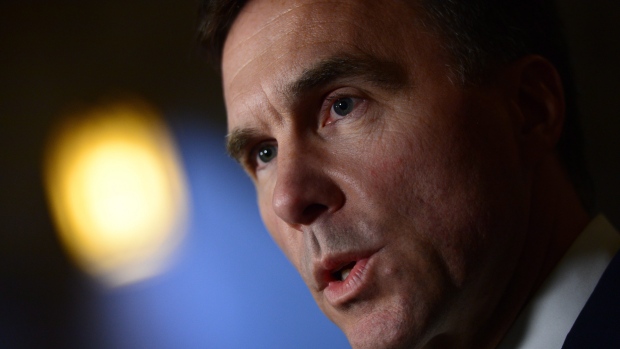Mar 6, 2017
Ottawa urged to ‘tread carefully’ as budget set for March 22
By Greg Bonnell

Ottawa will have to “tread carefully” with any tax changes in the spring budget in the face of U.S. tax policy that’s poised to get more competitive under President Donald Trump.
Despite a face-to-face meeting last week between Finance Minister Bill Morneau and his American counterpart, Treasury Secretary Steven Mnuchin, uncertainty remains when it comes to the Trump administration’s plans.
“He talked at a high level about the importance of tax reform and some of the different ideas,” Morneau said following the March 1 meeting with Mnuchin.
“But did not go into detail about how that might be moved forward into legislation.”
The Trudeau Liberals have also made taxation a key priority, vowing a fairer system that closes loopholes for the rich.
“On your question on tax fairness, I couldn’t agree more obviously and we’re going to have a number of things to say in the upcoming budget,” Prime Minister Justin Trudeau said during a town hall meeting in January.
This is, after all, a government hungry for revenue. An underperforming economy has not knocked the Liberals off their spending plans. And one thing you can fully expect in this budget – more deficit spending.
The latest Finance Department projections put the deficit at $27.8 billion for the coming year, with no return to balance over the five-year forecast.
Still, with the spectre of Canada becoming less competitive if the U.S. aggressively slashes tax rates, Morneau has his work cut out for him if tax tinkering is the path to more cash in federal coffers.
“There's no way to delay the budget enough to wait for these U.S. policy uncertainties to be resolved,” Avery Shenfeld, CIBC Capital Markets’ chief economist, told BNN in an email.
“But Ottawa should tread carefully on tax policies that affect corporates or investors in Canada, since it's likely that U.S. tax policy is going to get more competitive.”
Morneau has drawn criticism for apparently relying on private sector economist projections gathered in January for his budget, despite improving economic data.
Still, using those numbers could provide some insurance against Trump uncertainty.
“By not re-surveying economists for their latest projections, the minister might end up using a below current consensus forecast that builds in a bit of a cushion for downside risks,” Shenfeld said.
With vows to tackle tax fairness, some observers fear the Liberals will target the tax treatment of capital gains – obviously of big concern for any investor.
Under the current rules, if you sell an asset for a profit only half of that capital gain is considered taxable income. In finance speak, that translates into an inclusion rate on capital gains taxes of 50 per cent.
Critics say it’s exactly the kind of tax break that disproportionately benefits wealthy Canadians. And there have been calls to raise the inclusion rate to as high as 80 per cent.
In a recent report to clients, BMO Capital Markets Chief Economist Doug Porter noted he’s been fielding a lot of questions from clients on the issue.
His advice to the finance minister when it comes to changing the inclusion rate: “Don’t do it.”
“We cannot simultaneously crank personal marginal tax rates to some of the highest levels in the world… and then wring our hands in anguish and wonder why we suffer from a lack of entrepreneurialism and innovation on the other side,” Porter wrote.
The Trudeau Liberals are also weighing recommendations from Morneau’s Advisory Council on Economic Growth that are aimed at kick-starting the Canadian economy.
The wide-ranging proposals include expanding global trade ties and getting more Canadians into the workforce, in part by raising the eligibility for Old Age Security from 65 to 67 – a controversial proposal that was quickly rejected by the government.


